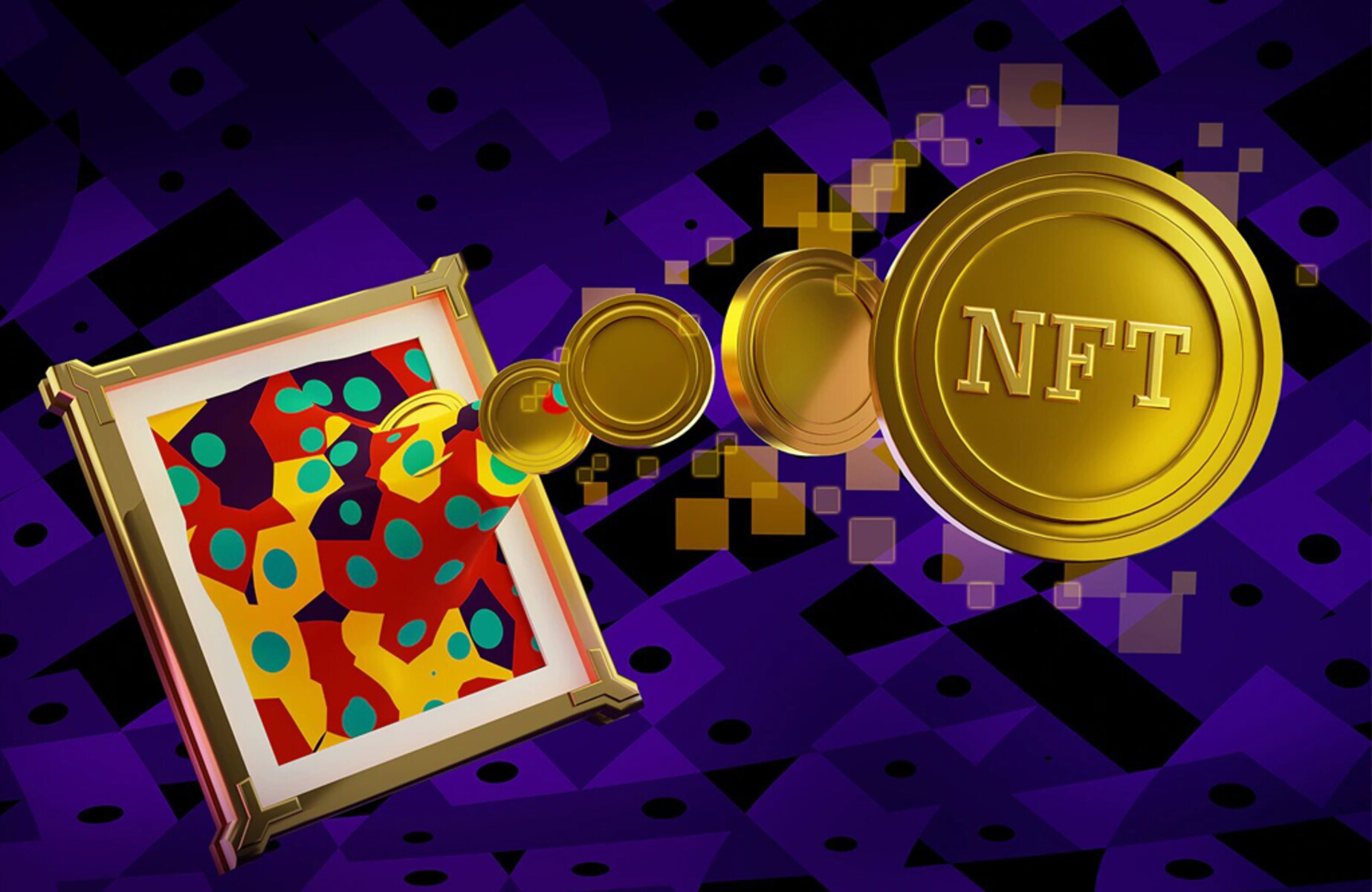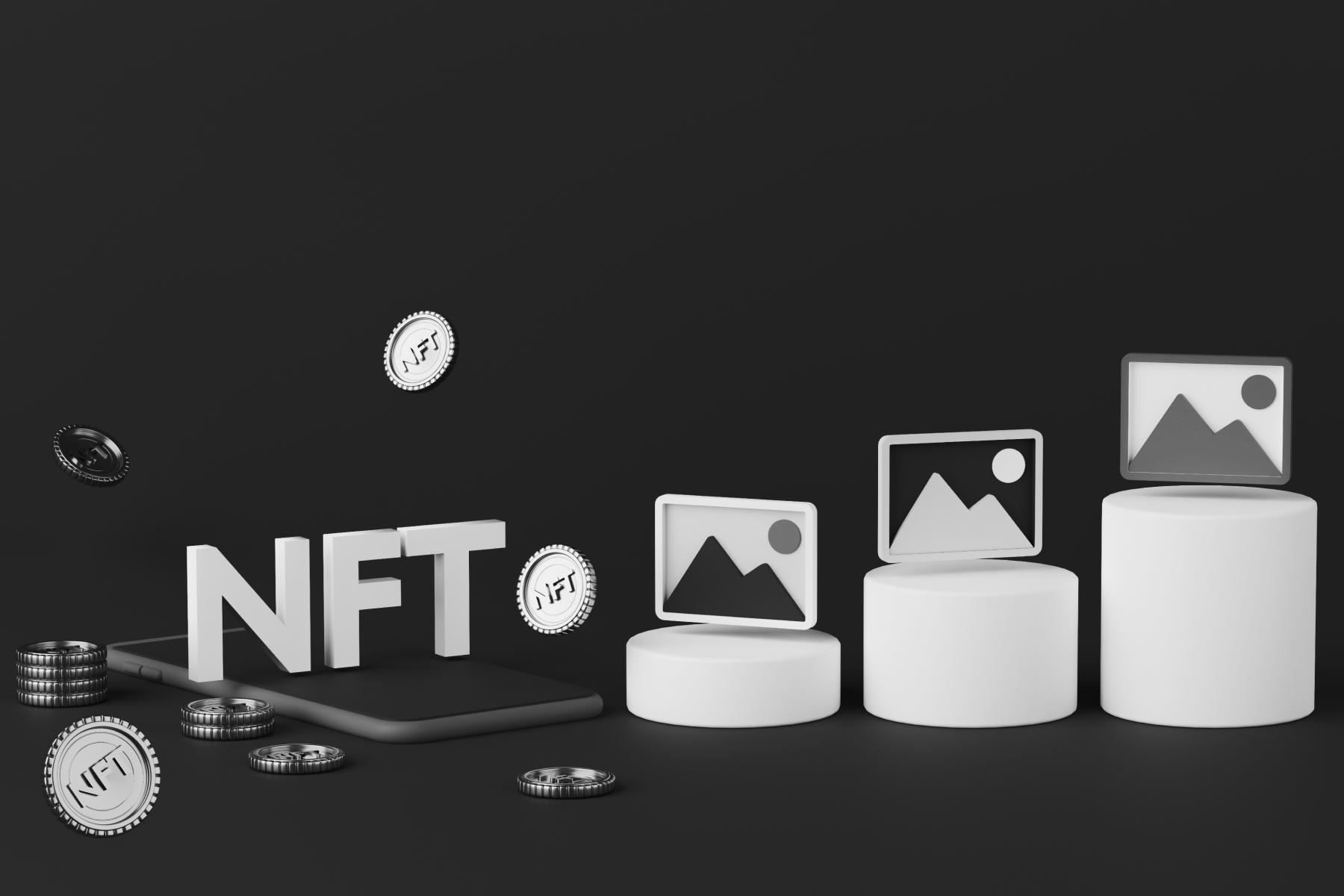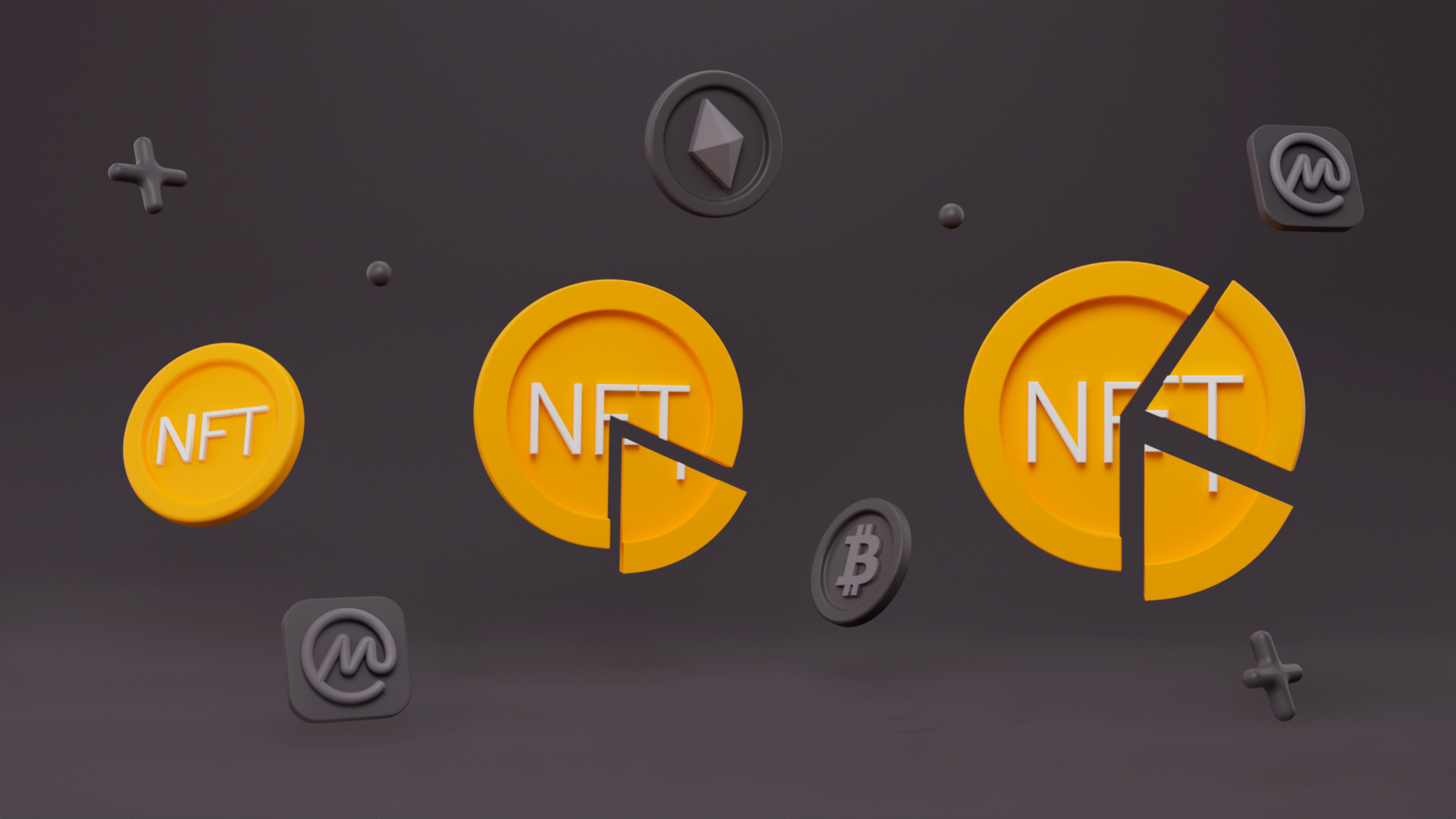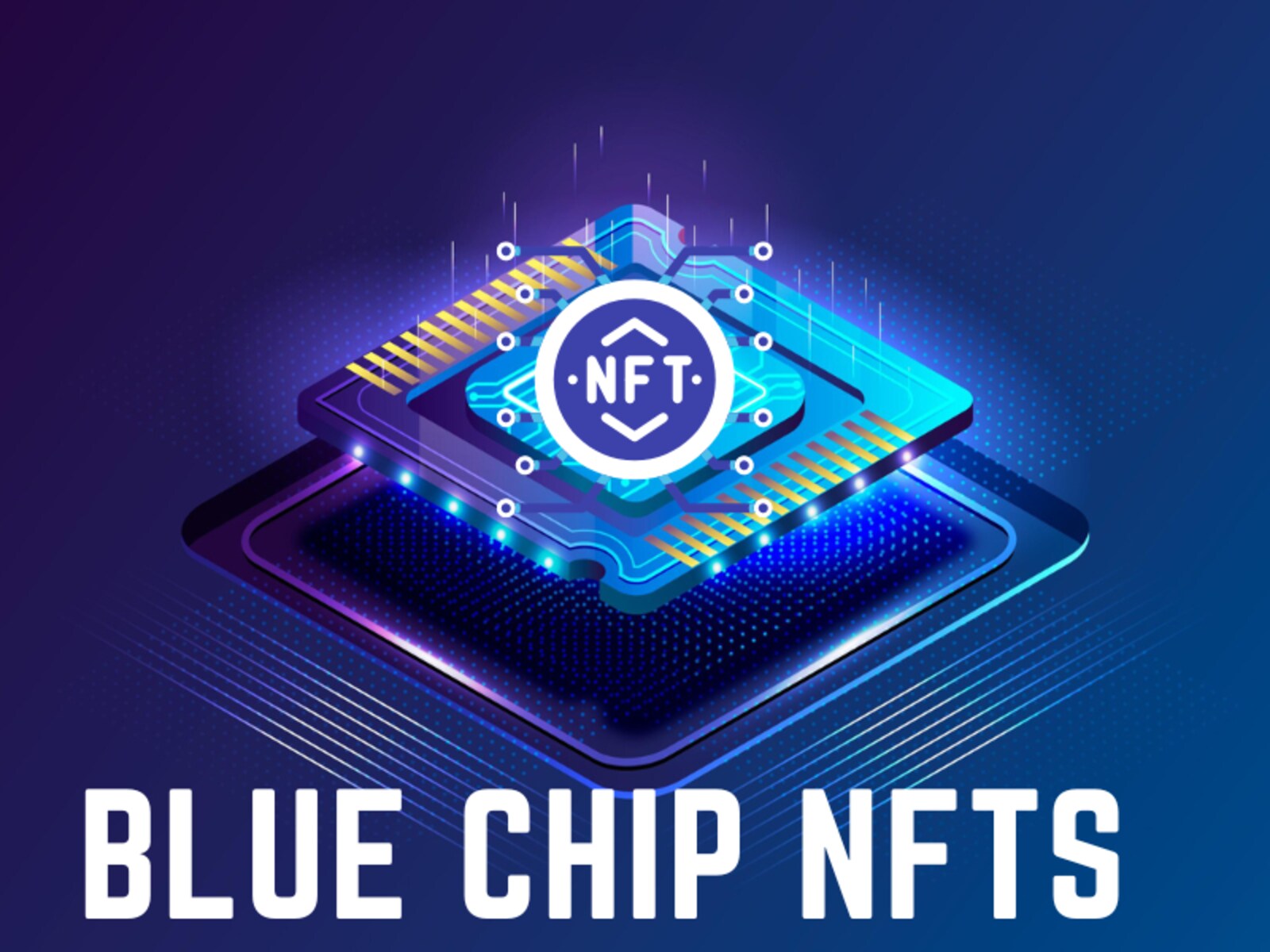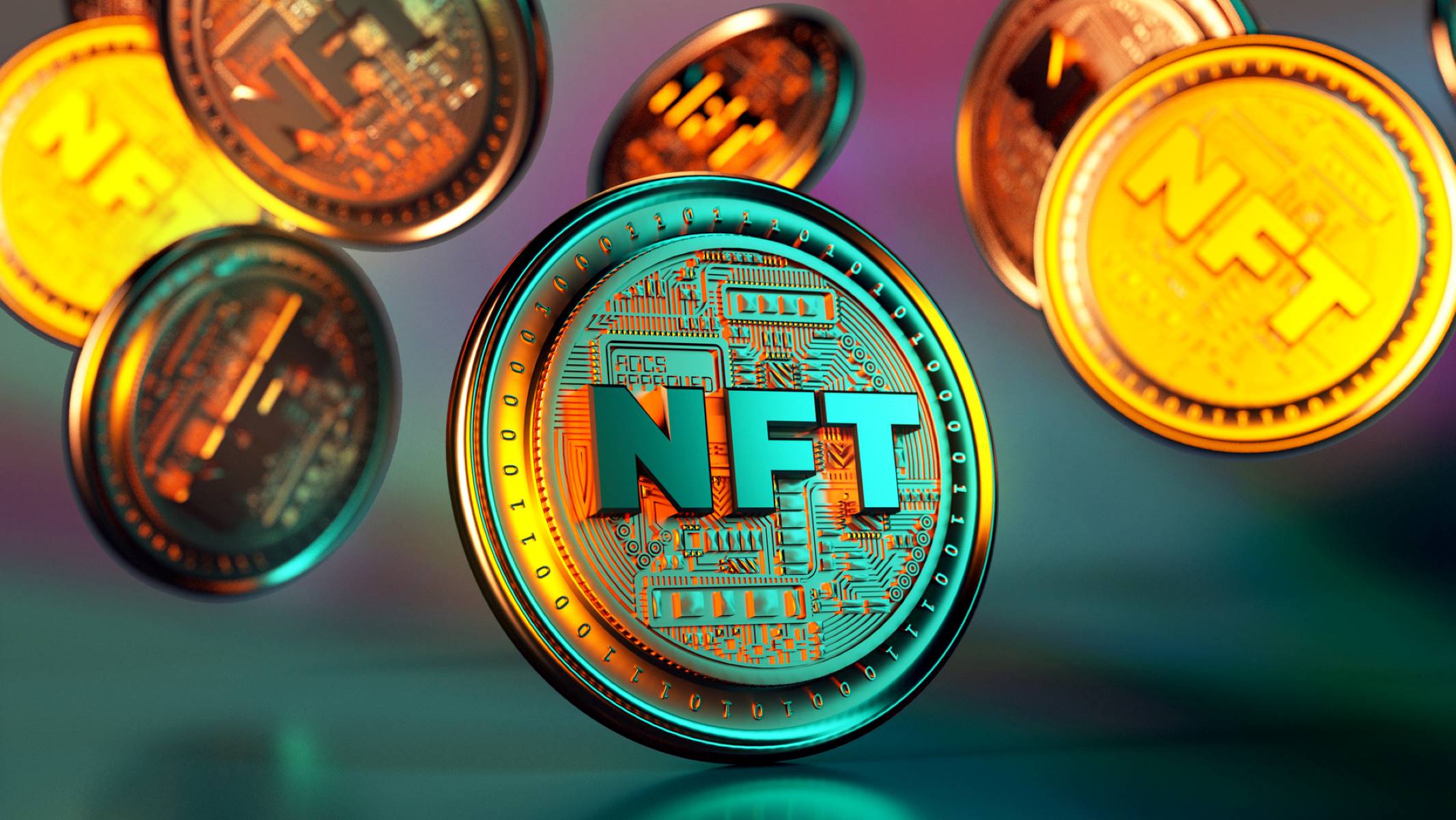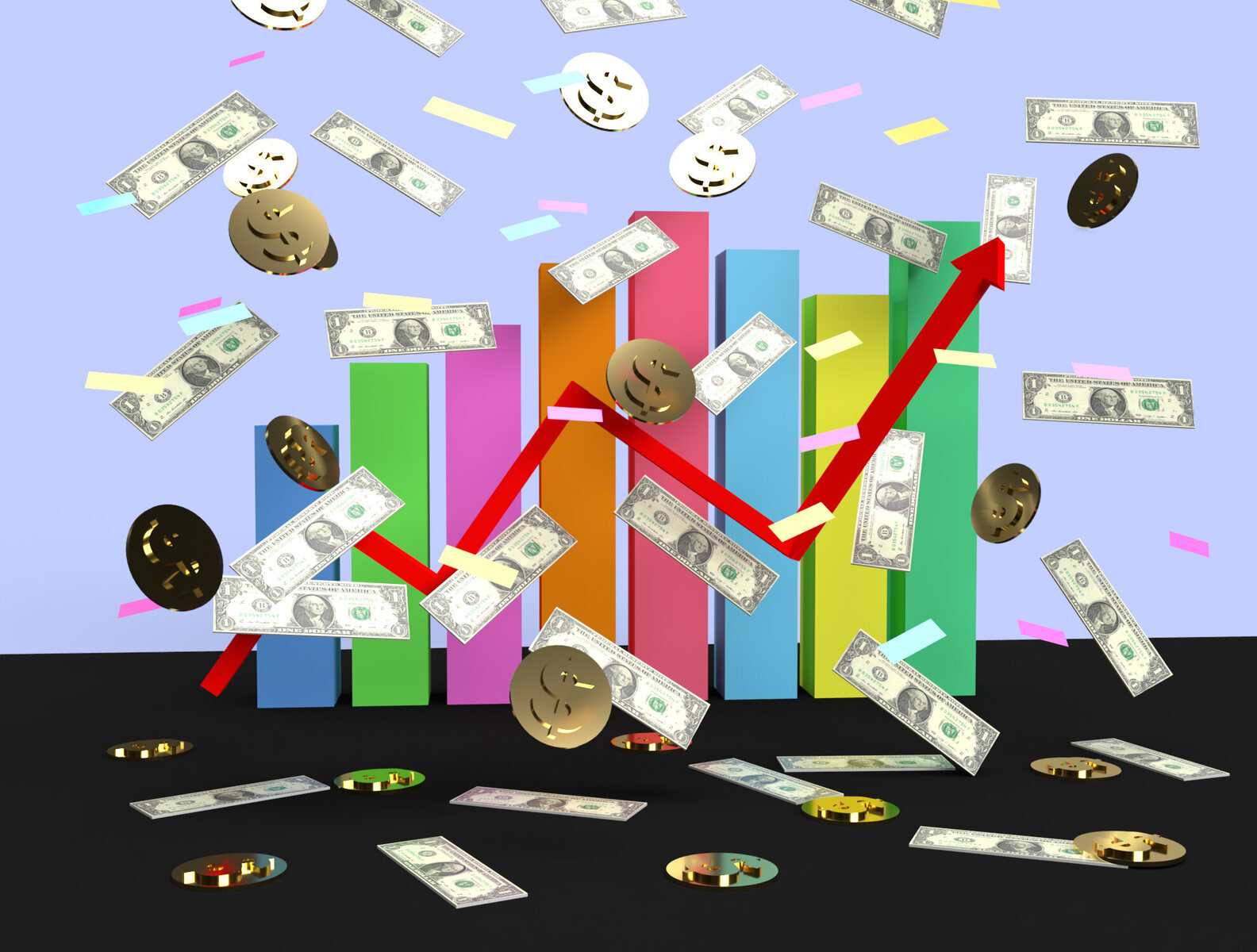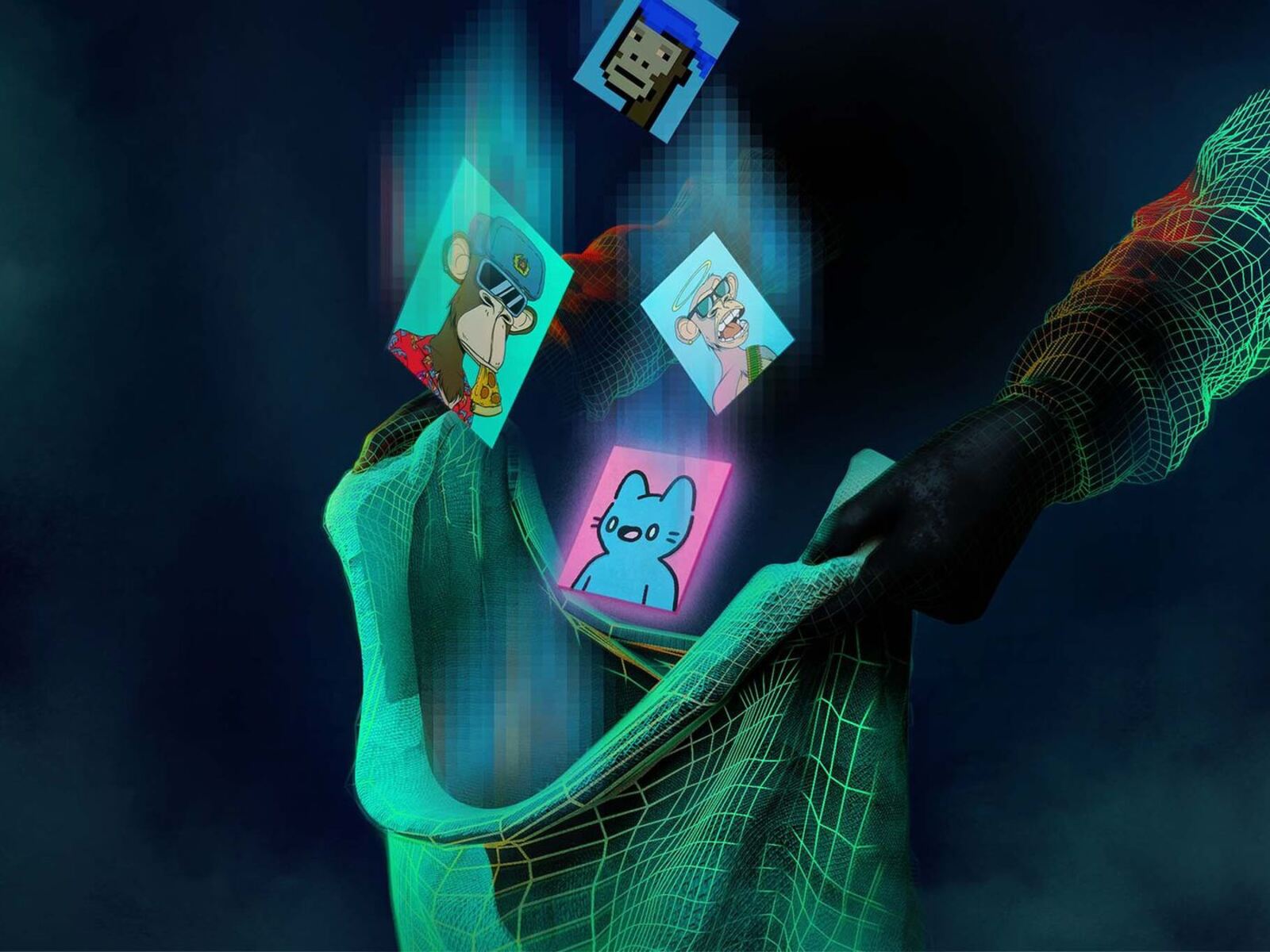Introduction
Welcome to the world of NFTs! If you’ve been keeping up with the latest trends in the digital landscape, you may have come across the term “NFT” more frequently. NFTs, or non-fungible tokens, have taken the art and collectibles world by storm, revolutionizing the way we perceive and value unique digital assets.
But what exactly is an NFT? In simple terms, it is a type of digital asset that represents ownership or proof of authenticity for a particular item or piece of content. Unlike cryptocurrencies such as Bitcoin or Ethereum, which are fungible and can be exchanged on a one-to-one basis, NFTs are unique and indivisible, making them highly sought after among collectors and investors alike.
One of the most fascinating aspects of NFTs is their ability to represent virtually anything in the digital realm. From digital artwork, music, videos, and even virtual real estate, NFTs have expanded the boundaries of ownership and provided a new way for creators and artists to monetize their work.
So, how does NFT investment work? Well, it’s quite similar to traditional investments in the sense that you buy NFTs with the expectation that their value will increase over time. However, unlike stocks or real estate, NFTs are still a relatively new and rapidly evolving market, making it both exciting and unpredictable.
Before diving into the world of NFT investments, it’s important to understand the different types of NFT investments and the factors to consider before taking the leap. In this article, we’ll explore the ins and outs of NFT investments, discuss the benefits and risks, and provide some notable success stories to inspire you on your journey.
Whether you’re an art enthusiast, collector, or simply intrigued by the digital revolution, NFT investments offer a unique opportunity to participate in the ever-evolving world of blockchain technology. So, let’s delve deeper into the captivating world of NFT investments!
What is an NFT?
Non-fungible tokens, commonly referred to as NFTs, have gained significant attention and popularity in recent years. But what exactly are NFTs?
An NFT is a unique digital asset that is stored on a blockchain, a decentralized and secure digital ledger. Unlike cryptocurrencies such as Bitcoin or Ethereum, which are fungible and can be exchanged on a one-to-one basis, each NFT represents a distinct and irreplaceable item, making it one-of-a-kind and indivisible.
What sets NFTs apart is their ability to authenticate and represent ownership of digital content, such as artwork, music, videos, and even virtual real estate. This newfound ability to assign value and ownership to digital creations has opened up endless possibilities for artists, collectors, and investors.
Behind each NFT is a digital certificate of authenticity, verifying its uniqueness and ensuring that it cannot be duplicated or replicated. This certificate, also known as a smart contract, contains important details about the NFT, including its metadata, ownership history, and any licensing rights associated with it.
The key technology powering NFTs is blockchain technology. Blockchain acts as an immutable ledger that records every transaction and ownership transfer, providing transparency and ensuring the integrity of each NFT. This is especially crucial in the digital realm, where the risk of counterfeit or unauthorized replication is prevalent.
One might wonder, how can something digital be worth so much? The value of an NFT is primarily derived from the perceived value and demand for that particular digital asset. In other words, it is worth what someone is willing to pay for it. The scarcity, uniqueness, and authenticity of NFTs make them incredibly desirable among collectors and investors.
While anyone can view and appreciate the digital content associated with an NFT, only the owner has true ownership rights, as recorded on the blockchain. This exclusivity has created a new market for digital art, where artists can directly sell their work to a global audience, eliminating the intermediaries often associated with traditional art sales.
In the next sections, we will explore how NFT investments work, the different types of NFT investments, factors to consider before investing, and the benefits and risks associated with this exciting new market.
How does NFT investment work?
NFT investments offer individuals the opportunity to profit from the rapidly growing market of digital collectibles and unique digital assets. The process of investing in NFTs can seem complex, but once you understand the basics, it becomes more accessible and exciting.
Here’s a breakdown of how NFT investments work:
1. Research and educate yourself: Before diving into NFT investments, it’s crucial to research and gain a good understanding of the market. Familiarize yourself with different types of NFTs, marketplaces, and notable artists or creators. Stay updated with the latest trends and news in the NFT space to make informed investment decisions.
2. Choose a reliable marketplace: There are several NFT marketplaces available where you can buy and sell NFTs. Some popular platforms include OpenSea, Rarible, and NBA Top Shot. Ensure that the marketplace you choose has a good reputation, a wide range of NFTs, and transparent transaction processes.
3. Set your budget: Determine how much you are willing to invest in NFTs and set a budget accordingly. It’s essential to allocate funds that you can afford to invest without putting your financial stability at risk. NFT investments, like any investment, come with potential risks, so it’s crucial to be cautious.
4. Identify valuable NFTs: Assessing the value of NFTs can be challenging, but there are a few key factors to consider. Look for NFTs created by renowned artists or those with a unique and compelling concept. Rarity, limited editions, and historical significance also play a role in determining the value of an NFT. Conduct thorough research and evaluate the potential for the NFT to appreciate over time.
5. Purchase NFTs: Once you’ve identified the NFTs you want to invest in, you can proceed with purchasing them. Each marketplace has its own purchase process, but generally, you will need a digital wallet, such as MetaMask, to store your NFTs and complete the transactions.
6. Track and monitor your investments: After acquiring NFTs, it’s crucial to track their performance and stay updated with market trends. Some NFT marketplaces provide portfolio trackers that allow you to monitor the value of your investments. Pay attention to the demand for the NFTs you own and the overall market sentiment towards them.
7. Sell or hold your NFTs: NFT investments can be short-term or long-term strategies. You can choose to sell your NFTs when their value appreciates or hold onto them for potential future growth. It’s important to have a clear investment strategy in mind and make decisions based on your financial goals.
Remember that the NFT market is still relatively new and volatile. Prices can fluctuate rapidly, and market trends can change quickly. It’s important to approach NFT investments with caution and conduct thorough research before making any investment decisions.
Now that we’ve explored how NFT investments work, let’s delve into the different types of NFT investments and the factors to consider before diving into this burgeoning market.
Different types of NFT investments
When it comes to NFT investments, there are several different types that investors can consider. Each type offers unique opportunities and potential returns. Let’s explore some of the most common types of NFT investments:
1. Digital Art: Digital art is perhaps the most well-known and popular form of NFT investment. Artists create unique digital artwork and sell them as NFTs on various marketplaces. Investing in digital art NFTs allows investors to support artists and potentially profit from the increasing value of the artwork as demand grows.
2. Collectibles: NFT collectibles are virtual items that are limited in number and have unique traits or attributes. These can range from virtual trading cards, virtual pets, or even virtual fashion items. Collectibles provide investors with the opportunity to speculate on the value of these items and potentially sell them for a higher price in the future.
3. Virtual Real Estate: Virtual real estate NFTs represent ownership of virtual land or property within online virtual worlds or metaverses. These NFTs allow investors to tap into the growing trend of virtual experiences and digital economies. Virtual real estate can appreciate in value as the popularity and relevance of the virtual world increases.
4. Domain Names: NFT domain names are unique digital addresses that represent ownership of a particular domain name. They can be bought, sold, and traded just like physical property, and their value can increase based on factors such as desirability, relevance, and scarcity. Investing in NFT domain names is akin to investing in valuable real-world domain names.
5. Virtual Goods and Accessories: NFTs representing virtual goods and accessories, such as in-game items or avatar enhancements, have gained popularity in the gaming and virtual world industries. These NFTs can be acquired and traded, enabling investors to profit from the growing demand for virtual goods and the expanding user bases of online games.
6. Intellectual Property: NFTs can also represent ownership or licensing rights to intellectual property, including music, videos, and written content. By investing in these NFTs, investors can support creators while potentially benefiting from the success of their intellectual property as it generates royalties or gains value in the market.
It’s important to note that these are just a few examples of the types of NFT investments available. The NFT market continually evolves, and new opportunities may emerge in the future. As with any investment, thorough research and due diligence are crucial to understanding the potential risks and rewards associated with each type of NFT investment.
Now that we have explored the different types of NFT investments, let’s move on to the factors that investors should consider before plunging into the world of NFT investments.
Factors to consider before investing in NFTs
Investing in NFTs can be an exciting venture, but it’s important to approach it with careful consideration. Before diving into the world of NFT investments, here are some key factors to consider:
1. Research and Due Diligence: Thorough research is essential before making any investment. Educate yourself about different NFT marketplaces, artists, and the history of the NFTs you’re interested in. Understand the underlying technology, potential risks, and market trends. Make informed decisions based on your research rather than blindly following hype.
2. Investment Budget and Risk Tolerance: Determine the amount of capital you are willing to allocate to NFT investments. Set a budget that aligns with your financial goals and risk tolerance. NFT investments can be volatile and speculative, so be prepared for potential losses and only invest what you can afford to lose.
3. Authenticity and Provenance: Verify the authenticity and provenance of the NFTs you’re considering. Examine the details of the smart contract and ensure that the NFT is legitimately created by the artist or content creator. Look for NFTs with clear ownership history and well-established reputations.
4. Rarity and Scarcity: Rarity and scarcity play a significant role in determining the value of NFTs. Consider the uniqueness and limited editions of the NFTs you’re interested in. Items that are scarce or have limited editions tend to have higher demand and potential for appreciation.
5. Market Demand and Trends: Evaluate the market demand and trends for the specific NFTs you’re considering. Look for NFTs that align with current or emerging trends, as they are more likely to attract interest and retain value. Stay updated with the latest news and developments in the NFT space to make informed investment decisions.
6. Creator Reputation and Community: Consider the reputation and credibility of the artist or content creator behind the NFTs. Well-known and respected creators tend to attract more attention and have a higher market value for their NFTs. Additionally, examine the community and following surrounding the artist or creator, as this can influence the demand and future growth of their NFTs.
7. Wallet Security and Storage: Ensure that you have a secure digital wallet to store your NFTs. Choose a wallet provider that offers robust security measures and has a good reputation in the industry. Be cautious of phishing attacks and only connect your wallet to trusted platforms.
8. Exit Strategy and Liquidity: Have an exit strategy in mind before investing in NFTs. Determine when and how you plan to sell your NFTs if needed. Consider market liquidity and the ease of selling your NFTs if you decide to exit your investment.
Remember, investing in NFTs involves risk, and the market is still relatively new and volatile. It’s crucial to approach NFT investments with caution and only invest what you can afford to lose. Thorough research, careful consideration of these factors, and a strategic approach are vital for successful NFT investments.
Now that we’ve discussed the factors to consider, let’s explore the benefits and risks associated with NFT investments.
Benefits and risks of NFT investments
Like any investment, NFT investments come with their own set of benefits and risks. Understanding these can help you make informed decisions and mitigate potential drawbacks. Let’s explore the benefits and risks of NFT investments:
Benefits:
1. Ownership and authenticity: NFTs offer a unique form of ownership and authenticity for digital assets. Through blockchain technology, NFT owners have verifiable proof of ownership and can establish the uniqueness and authenticity of their digital collectibles.
2. Potential for profitability: Investing in the right NFTs can provide significant profits. The growing interest and demand for collectible digital assets have resulted in some NFTs appreciating in value over short periods. By investing in promising NFTs, you have potential opportunities to generate substantial returns on your investment.
3. Direct support for artists and creators: NFT investments provide a direct way to support artists and content creators. Through purchasing their NFTs, you can directly contribute to their livelihood and allow them to generate income from their digital creations, without relying on traditional intermediaries.
4. Market potential and innovation: The NFT market is still in its early stages, which presents opportunities for early adopters and innovators. Being part of this emerging market allows you to witness and participate in the ongoing evolution of digital ownership, art, and collectibles.
Risks:
1. Volatility and speculation: The NFT market can be highly volatile, with prices fluctuating rapidly. Investing in NFTs requires careful consideration and research, as some assets may experience significant price drops or fail to gain traction in the market.
2. Lack of regulation and oversight: The NFT market is still relatively unregulated, which means there may be risks associated with fraud, scams, and lack of standardization. It’s essential to be cautious and conduct due diligence when participating in the market.
3. Market saturation and competition: As the popularity of NFTs increases, the market can become saturated with an abundance of options. This saturation can make it challenging to identify high-quality and valuable NFTs among the vast supply. Moreover, increased competition may impact the potential for significant profits.
4. Environmental concerns: The environmental impact of NFTs, particularly their energy consumption, has raised concerns. The energy-intensive nature of blockchain transactions involved in minting and trading NFTs has drawn criticism due to its carbon footprint.
Understanding the benefits and risks of NFT investments is vital for making informed investment decisions. By carefully evaluating these factors, you can navigate the NFT market with greater confidence and minimize potential pitfalls.
Now that we’ve explored the benefits and risks, let’s delve into some notable success stories in the world of NFT investments.
Notable success stories in NFT investments
Over the past few years, the world of NFT investments has seen some remarkable success stories, with investors making substantial profits and gaining recognition. Let’s take a look at a few notable success stories:
1. Beeple’s “Everydays: The First 5000 Days”: In March 2021, a digital artwork by the artist Beeple sold for a staggering $69.3 million at a Christie’s auction. Everydays: The First 5000 Days” became one of the most expensive NFT sales to date, propelling Beeple to notable fame and highlighting the potential value of digital art as collectible assets.
2. CryptoPunks: CryptoPunks are one of the earliest and most iconic collections of NFTs. They are 10,000 unique 24×24 pixel art characters created by Larva Labs. In recent years, the value of CryptoPunks has skyrocketed, with some rare characters selling for millions of dollars. Owning a CryptoPunk has become a status symbol for many NFT collectors and investors.
3. NBA Top Shot: NBA Top Shot is an NFT platform that allows fans to collect and trade officially licensed NBA highlights. The platform gained significant popularity, with some of the rarest and most sought-after moments selling for thousands or even millions of dollars. NBA Top Shot demonstrated the demand for sports-related NFTs and the willingness of fans to invest in digital collectibles.
4. Virtual Real Estate in Decentraland: Decentraland is a decentralized virtual world built on blockchain technology. Within Decentraland, users can buy and sell virtual land as NFTs. In the early stages of Decentraland’s development, some investors purchased virtual land for relatively low prices. As the platform gained traction and more users joined, the value of virtual land soared, resulting in sizable profits for early investors.
5. Art Blocks Curated: Art Blocks Curated is an NFT platform focused on generative art. Artists create algorithmic artworks, and collectors can purchase them as NFTs. The platform has seen remarkable success, with some projects selling out quickly and gaining significant attention. Investing in Art Blocks Curated projects has allowed many collectors to acquire valuable and unique generative art pieces.
These success stories highlight the potential for substantial returns on NFT investments. However, it’s important to note that these are exceptional cases, and not all NFT investments will yield such significant profits. The NFT market can be unpredictable, and success stories should be viewed as exceptional rather than the norm.
Now that we’ve explored notable success stories, let’s discuss how you can get started with NFT investments.
How to get started with NFT investments
If you’re ready to dive into the world of NFT investments, here’s a step-by-step guide on how to get started:
1. Educate yourself: Begin by educating yourself about NFTs, blockchain technology, and the various marketplaces available. Understand the basics of how NFTs work, their potential benefits and risks, and the factors to consider before investing.
2. Set up a digital wallet: To participate in NFT investments, you’ll need a digital wallet to store your NFTs. Choose a reputable wallet provider that is compatible with the marketplaces you’re interested in. Popular wallet options include MetaMask, Trust Wallet, and Coinbase Wallet.
3. Fund your wallet: Once you’ve set up a digital wallet, you’ll need to fund it with the cryptocurrency accepted by the NFT marketplaces you plan to use. Ethereum (ETH) is the most commonly used cryptocurrency for NFT transactions, so acquiring ETH is a good starting point. You can purchase ETH from cryptocurrency exchanges like Coinbase or Binance.
4. Choose a marketplace: Select an NFT marketplace that aligns with your investment goals and preferences. Consider factors such as the variety of NFTs available, fees, user interface, and community reputation. Popular NFT marketplaces include OpenSea, Rarible, SuperRare, and NBA Top Shot.
5. Conduct thorough research: Before making any investments, thoroughly research the NFTs and creators you’re interested in. Dive into the details of the NFTs’ authenticity, limited editions, and the reputation of the artists or content creators. Assess the market demand and potential for future value appreciation.
6. Start with small investments: As a beginner, it’s wise to start with small investments to familiarize yourself with the market and mitigate potential risks. Allocate a portion of your investment budget for NFTs and experiment with different types of investments to gain experience.
7. Stay updated with market trends: Keep yourself updated with the latest news and developments in the NFT space. Follow influencers, artists, and reputable NFT-related accounts on social media platforms. By staying informed, you’ll have a better understanding of new opportunities and potential risks.
8. Diversify your portfolio: Diversification is key to managing risk in any investment strategy. Invest in various types of NFTs across different artists, genres, or categories. This helps spread out the potential risks and increases your chances of finding successful investments.
9. Monitor your investments: Once you’ve made NFT investments, make sure to track their performance. Keep an eye on market trends, demand for the NFTs you own, and potential selling opportunities. Regularly evaluate your holdings and make adjustments to your investment strategy as needed.
10. Participate in the community: Engage with the NFT community, join forums, and interact with fellow collectors and investors. This not only helps you stay informed but also opens up networking opportunities, allowing you to learn from others and potentially discover new investment prospects.
Getting started with NFT investments requires research, preparation, and a mindful approach. By following these steps and continually educating yourself, you’ll be on your way to exploring the exciting opportunities that the NFT market has to offer.
Now that we’ve covered how to get started, let’s summarize the key points and conclude our discussion on NFT investments.
Conclusion
NFT investments have revolutionized the way we perceive and value digital assets, offering unique opportunities for collectors, investors, and artists alike. With their ability to authenticate ownership and represent a wide range of digital content, NFTs have opened up a new frontier for creative expression and financial potential.
In this article, we explored the concept of NFTs, how NFT investments work, different types of NFT investments, factors to consider before investing, and the benefits and risks associated with this emerging market. We also delved into notable success stories and provided a step-by-step guide for getting started with NFT investments.
As you embark on your NFT investment journey, it’s crucial to remember that the NFT market is still relatively new and can be highly volatile. Thorough research, staying informed about market trends, and understanding the risks involved are essential for making informed investment decisions.
While NFT investments offer exciting potential for profit, it’s important to approach them with caution and avoid investing more than you can afford to lose. Diversify your portfolio, start with small investments, and continuously monitor the performance of your holdings.
Moreover, remember that the value of an NFT is not solely financial but can also be rooted in the emotional and cultural significance attached to a digital asset. NFTs have the power to change the way we appreciate and support artists, enabling creators to directly monetize their work and build strong connections with their audiences.
As the NFT market continues to evolve, it’s crucial to stay adaptive and open to new possibilities. Embrace the innovative spirit of the digital landscape, but always approach investments with thoughtful consideration, research, and a long-term investment strategy.
Now that you have a better understanding of NFT investments, it’s time to venture into this exciting world and explore the boundless opportunities that await.







